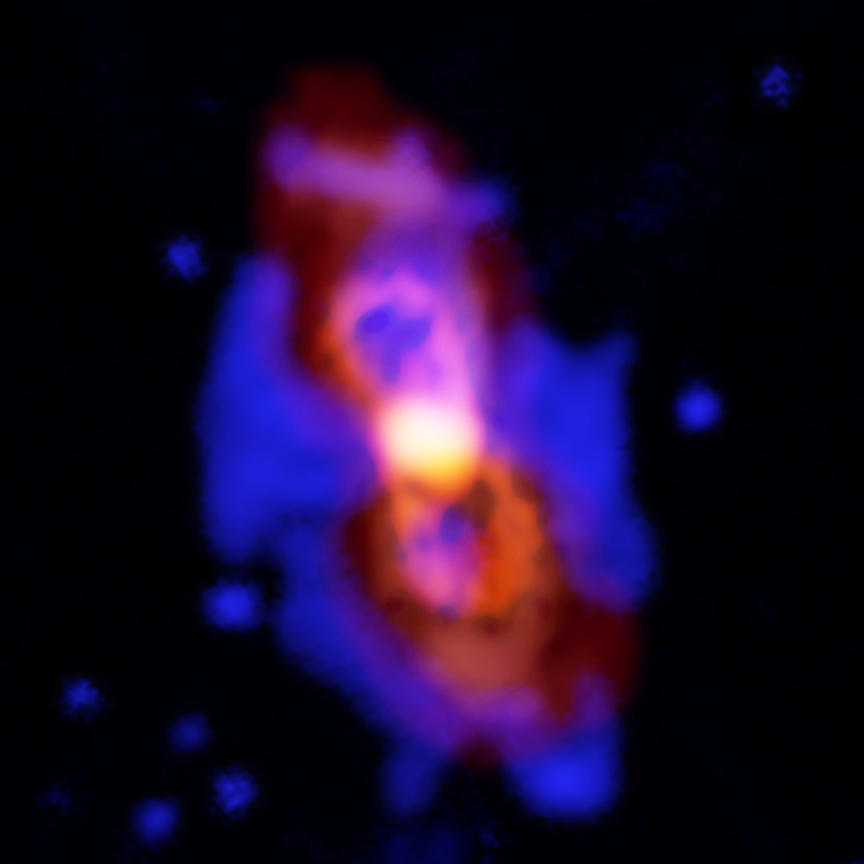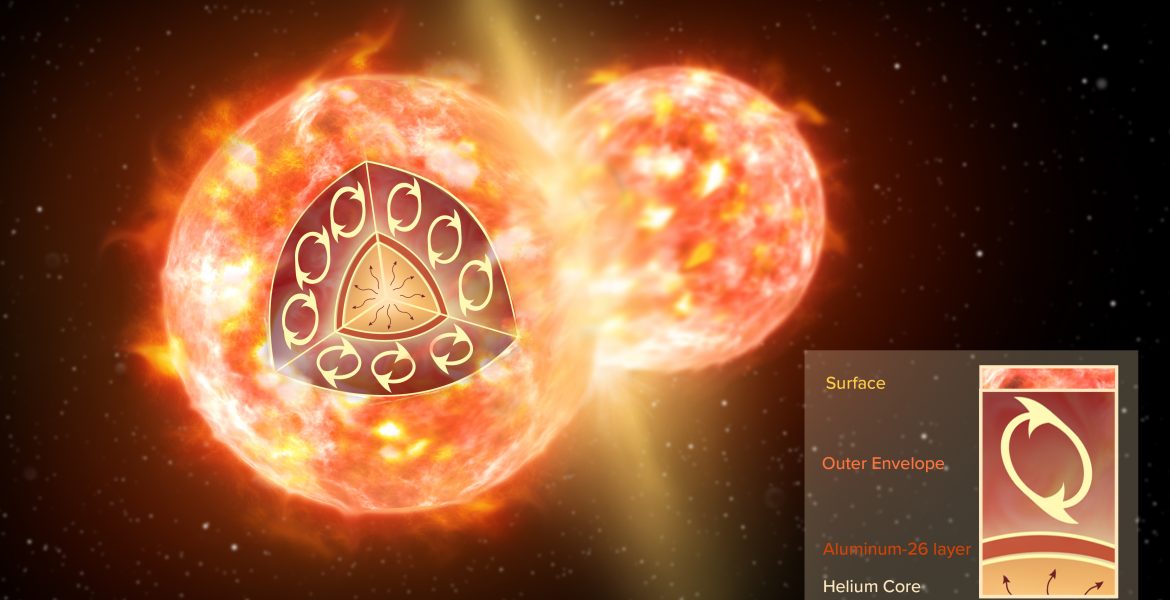Image List
-

Composite image of CK Vul, the remains of a double-star collision. This impact launched radioactive molecules into space, as seen in the orange double-lobe structure at the center. This is an ALMA image of 27-aluminum monofluoride, but the rare isotopic version of AlF resides in the same region. The red, diffuse image is an ALMA image of the more extended dust in the region. The blue is optical hydrogen emission as seen by the Gemini observatory.
Credit: ALMA (ESO/NAOJ/NRAO), T. Kamiński & M. Hajduk; Gemini, NOAO/AURA/NSF; NRAO/AUI/NSF, B. Saxton -

Artist impression of the collision of two stars, like the ones that formed CK Vul. The inset illustrates the inner structure of one red giant before the merger. A thin layer of 26-aluminum (brown) surrounds a helium core. An extended convective envelope (not to scale), which forms the outermost layer of the star, can mix material from inside the star to the surface, but it never reaches deep enough to dredge 26-aluminum up to the surface. Only a collision with another star can disperse 26-aluminum.
Credit: NRAO/AUI/NSF; S. Dagnello